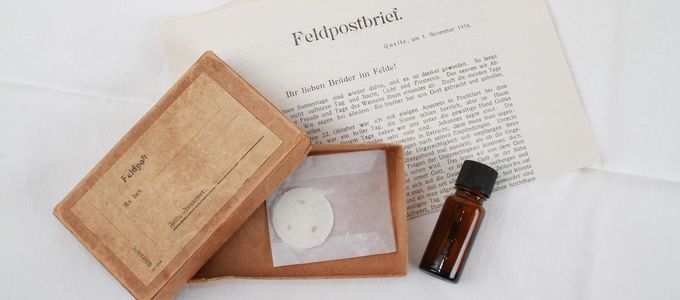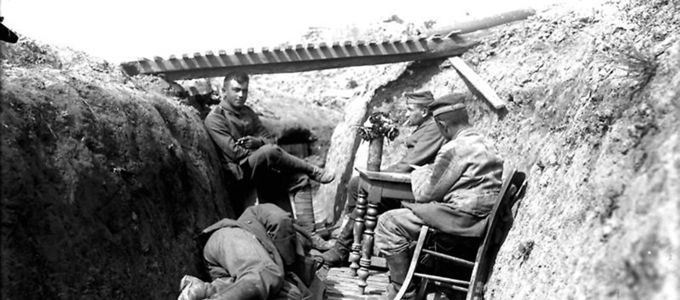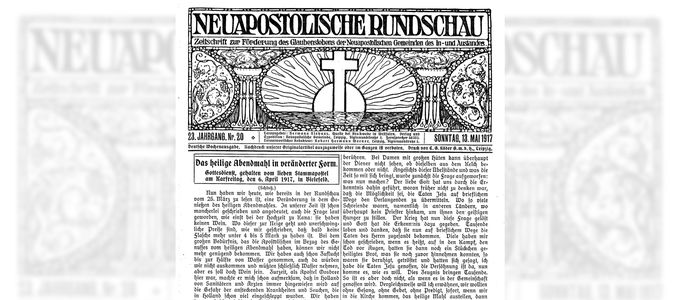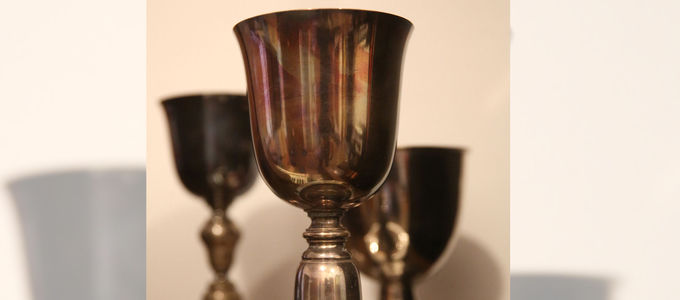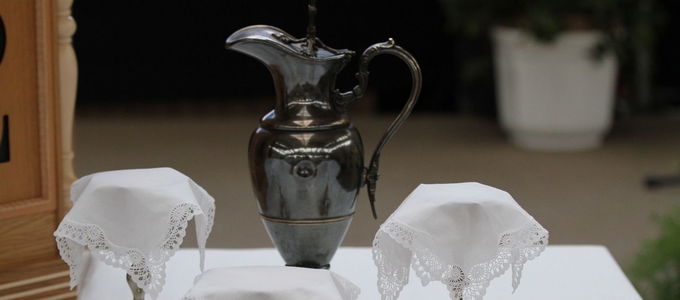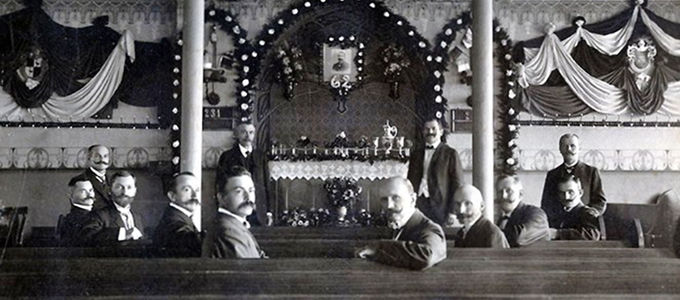
Three drops are celebrating their centenary. On Good Friday 1917, the Chief Apostle officially celebrated his first divine service without sharing the cup. Instead he dispensed communion wafers. What is normal today had become an absolute necessity at the time. Why?
“There will be a change in the celebration of Holy Communion.” These were the words Chief Apostle Hermann Niehaus used to introduce a new era on 6 April 1917 in Bielefeld (Germany). Until then it had been common practice to dispense the bread in the form of a wafer and to offer the wine in a cup. From now on, the wine would be found on the wafer in the form of three drops.
Two problems …
With World War One raging in Europe, it was almost impossible to find wine. “We have already tried to solve the problem by mixing the wine with water, but even so there will not be enough,” the Chief Apostle said in this historic divine service.
Cholera, typhoid fever, and tuberculosis. The fear of epidemics had forced the focus on hygiene. The cup was wiped with a cloth after each participant had taken a sip from it, and then it was rotated slightly. In fact, it did not go unnoticed that even the partakers of communion rotated the cup, and some only sipped from it, barely touching the cup with their lips.
… and three solutions
A leading article in a German Church magazine of the time (Neuapostolische Rundschau), published on 25 March 1917, offered three solutions.
One option was to introduce small individual cups, as the Protestant Church in Germany had already done. But more or less ornate vessels would introduce class differences into the celebration of Holy Communion, “which is to be avoided from a strictly religious point of view”.
The second option was to spear the wafer with an ivory fork, dip it into the wine, and then dispense it to the brothers and sisters—something the congregations in Holland did. But in no time the wafers were soggy and stuck to people’s hands. From a hygienic point of view, this approach was not much better.
The last option, and what finally decided it, came from an entirely unexpected direction: something the Church had to deal with as a result of the war.
Necessity, the mother of invention
October 1915, at the front lines in France. A soldier with the initials W. G. receives a letter from the Chief Apostle, containing Holy Communion wafers: “We do not only pray and intercede for you, but also let you participate in the sacrifice of Jesus through this.” In reply, W. G. writes: “I am as a happy as a little child here on my straw bed.” This response is printed in the January 1916 edition of the Neuapostolische Rundschau.
Initially, the wafers that were sent to the front were accompanied by small bottles of wine. But they somehow always disappeared from the parcels—as did cigarettes. Soon after the outbreak of World War One in 1914, the Chief Apostle therefore provided soldiers fighting at the front with a combination wafer. “We consecrate the cup [with the wine] and the wafers and then drizzle some of the wine on the wafer.”
It is not the amount that counts
Does this still correspond to Holy Communion as instituted by Jesus Christ? The Chief Apostle responded with a comparison to baptism: “There are certain denominations that immerse themselves fully in water. For us the sprinkling is enough.” With this he expressly referred to the Catechism by Martin Luther in this Good Friday service: “Not the water is important, but the word of God that accompanies the water.”
“If thousands of people are happy with the sprinkled wafers, so are we,” Chief Apostle Niehaus said in the Good Friday service: “The bread [wafer] will be sprinkled with three drops of red wine, so that it can be seen.” To begin with he instituted this in his own working area as an Apostle. It became compulsory for all following a joint decision, which was communicated by way of a circular in the latter part of the year 1919. “Following a resolution by the Apostles’ Council, this now applies throughout the Church.”
And with that other problems began. Where would they get the wafers? And how should the wine be sprinkled on them? But that is another story …







